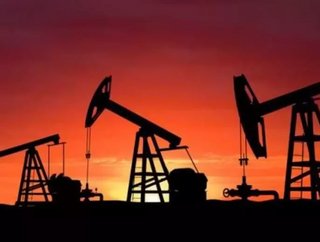Offshore Technology Oil and Gas Businesses Need to Know About

4D Pre-Drill Stress Determination
Australian-based Predrill Stresses International (PSI) has introduced the 4DGeoStress technology to the oil and gas world. This methodology and software is utilized for measuring stress direction, as well as the magnitude from interpreted-reflection, seismic pre-drilling.
This innovative, patented technology can deliver accurate stress determination during all stages throughout exploration, drilling and production activity. PSI’s methodology measures the maximum horizontal compression stress direction and magnitude, allowing for accurate projections of fracture permeability, wellbore stability and fault seal.
The privately-owned business also offers consulting services for its 4DGeoStress methodology and software. The focus of the consultation is utilizing stress consistent seismic interpretation for single well planning through total field, multiple wellbore designs.
The company’s pre-drill stress prediction for drilling includes well design, extended-reach optimization, minimizing borehole collapse, pack-off reduction, overpressure and geological hazards, and multi-lateral and sidetrack design.
Oil Spill Eater II
Oil Spill Eater International (OSEI), a U.S.-based oil-spill cleanup company, was established in 1989, and has since been instrumental in the oil and gas industry. The company developed the Oil Spill Eater II (OSE II), which has been instrumental in cleaning oil spills since 1989.
Considered to be the most cost-effective and environmentally safe bioremediation process, the OSE II removes a variety of hazardous spills and contamination in the water, and even on land. Since its inception, the company has been responsible for cleaning up more than 14,000 spills.
The system is considered the most environmentally safe and cost effective bioremediation process in the world, and is listed on the U.S. Environmental Protection Agency’s National Contingency Plan for Oils Spills (NCP).
The OSE II is a one-of-a-kind, biocatalytic system of multi-enzyme liquid concentrate that stimulates and speeds up natural biological reactions. Crude oil and other organic substances quickly decompose, biodegrading into carbon dioxide and water, when OSE II is mixed with fresh water or salt water, and oxygen.
Subsea Water Injection and Treatment
Norwegian subsea technology business, Well Processing, is responsible for inventing a breakthrough in water treatment for subsea processing. Subsea Water Injection and Treatment (SWIT) has multiple functions, including increasing oil recovery and enhancing oil production, and significantly minimizing CAPEX and OPEX. The SWIT technology is available for use in all oil-fields in which seawater is utilized for pressure maintenance and as a drive mechanism.
The system overcomes restrictions that accompany traditional methods of increasing the recoverable volume of oil and enhancing production, such as cost and limitations. SWIT technology sets up equipment on the seabed, which is ideal for new or mature fields. The system’s treatment principles have been proven in labs and a pilot will be demonstrated in the field.
Reservoir engineers are given more flexibility in terms of injecting as much treated seawater as is required in reservoir areas. Studies indicate that the SWIT technology has the potential to reduce CAPEX by up to 50 percent, and OPEX by 25 percent. Additionally, the technology can continue functioning for up to two years without interruption.
SWIT provides multiple other benefits, such as solids removal, seawater sterilization, seabed injection and subsea water treatment.
Water Abrasive Suspension Jet Cutting Equipment
Global leader in the manufacturing of specialized, well-servicing operations equipment, Applied New Technologies (ANT), has produced the Water Abrasive Suspension (WAS) jet cutting equipment. ANT tears down and then repairs pipelines, casings and steel structures, both above water and underwater near high-risk explosion locations.
ANT’s WAS cutting process has the ability to cut nearly all materials by using a high-pressure water jet and sharp-edged abrasive. The units are ideal in tasks that require internal cutting in narrow pipes, or disposing of oil and gas platforms in an environmentally-friendly way. Cuts require no contact and no significant heat generation or deformation.
The system is unique to ANT due to the specific valve technology and the mixture of water and abrasive material at a high pressure. The offshore WAS technology offers the essential combination of high-cutting velocity with excellent precision. Minimal abrasive material is consumed when cutting and the system also allows for effective remote manipulation. The contact-free remote manipulation systems can also be used to bridge large distances.
Opus Compact Flotation Unit
Specialists in oil and gas separation at the UK-based company, Opus, offer an advanced compact floatation unit to the industry. Due to the fact that the technology has no moving parts, no external energy is required for operation. The multi-phase separator is compact and cost-effective. Additionally, the Opus compact flotation unit (CFU) involves simple installation and minimal maintenance.
The system offers high-flow capacity, handles high solids loading, and operates at low or high pressures. Low operator intervention is required with the unit. It is also designed for retrofit onto existing platforms. The system delivers a high performance in slugging flow and variable inlet oil content.
Read this story in our digital magazine: http://www.energydigital.com/magazines/3624






